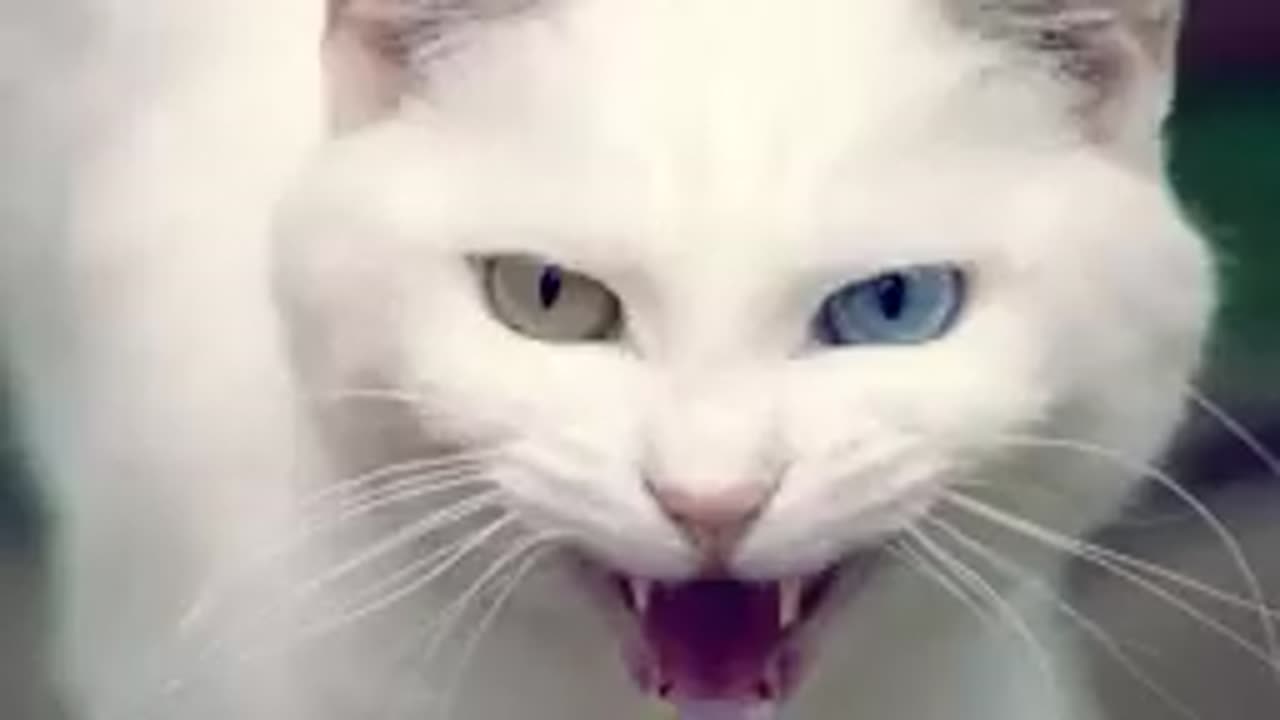Premium Only Content

Cat voice | cats sounds
Cats are known for their diverse and expressive vocalizations, and their voices can convey a range of emotions and intentions. Here are some common cat vocalizations and what they might indicate:
1. **Meowing:**
- **Soft Meows:** Often used as a greeting or a way to get attention.
- **Loud and Insistent Meows:** Can indicate hunger or a desire for something specific.
- **Chirping or Trilling Meows:** Some cats make these sounds, especially when excited or trying to communicate with birds or other animals.
2. **Purring:**
- Usually a sign of contentment, but cats may also purr when stressed or in pain as a self-soothing mechanism.
3. **Hissing and Growling:**
- Defensive sounds, signaling fear, discomfort, or aggression. Cats may make these sounds when feeling threatened.
4. **Yowling:**
- Typically associated with mating behavior in unspayed or unneutered cats. It can also be a sign of distress, pain, or territorial disputes.
5. **Chattering:**
- Some cats make a chattering sound when observing birds or other prey animals. It's thought to be a sign of excitement or frustration.
6. **Screaming:**
- A loud, intense vocalization that can occur during fights or territorial disputes. It's usually a sign of extreme distress.
7. **Whining:**
- A high-pitched, persistent sound that may indicate discomfort, illness, or a desire for attention.
8. **Silent Meowing:**
- Some cats open their mouths without making a sound. This can be a playful behavior or an attempt to communicate non-verbally.
Remember that individual cats may have unique vocalizations, and understanding your cat's specific sounds can enhance your communication with them. Additionally, consider the context, body language, and overall behavior of the cat to better interpret their vocalizations accurately. If you notice sudden changes in your cat's vocalizations or behavior, it's advisable to consult with a veterinarian to rule out any underlying health issues.
-
 LIVE
LIVE
SilverFox
14 hours ago🔴LIVE - WoW NEWBIE - Level 15 Warrior
378 watching -
 LIVE
LIVE
wyspers
1 hour ago1st Rumble Stream! - Black Friday - College Football 25 - Dynasty year 2
142 watching -
 3:22:48
3:22:48
RG_GerkClan
3 hours agoLIVE: It's Time...to Dominate - GrayZone Warfare - Gerk Clan
5.17K2 -
 41:43
41:43
Styxhexenhammer666
1 hour agoFriday LIVE: Joy Reid Goes Insane, BDS Legislation, Liz Krueger and Secession
9.58K6 -
 1:29:10
1:29:10
Real Coffee With Scott Adams
2 hours agoEpisode 2674 CWSA 11/29/24
32.8K5 -
 LIVE
LIVE
Wendy Bell Radio
6 hours agoCrazy Doesn't Sell
9,073 watching -
 36:13
36:13
The Why Files
4 days agoProject Redsun: NASA's Secret Manned Missions to Mars
49.6K148 -
 1:39:12
1:39:12
Jeff Ahern
3 hours ago $4.33 earnedFriday Freak out with Jeff Ahern
37.1K -
 48:42
48:42
PMG
1 day ago $1.53 earned"Hannah Faulkner and Nora Clinton | How Life Under Communism Crushed the Human Personality"
10.9K2 -
 LIVE
LIVE
Clownfish TV
5 days agoClownfish TV News 24/7
339 watching